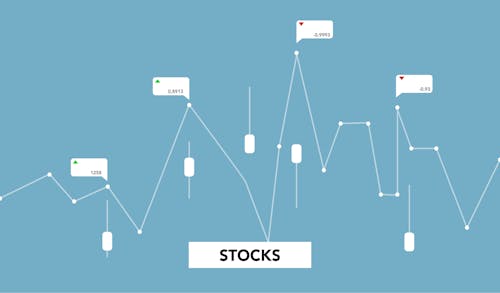3 Top Dividend Stocks To Maximize Your Retirement Income

Image Source: Pexels
Here's an eye-opening statistic: older Americans are more afraid of running out of money than of death itself.
And retirees have good reason to be worried about making their assets last. People are living longer, so that money has to cover a longer period. Making matters worse, income generated using tried-and-true retirement planning approaches may not cover expenses these days. That means seniors must dip into principal to meet living expenses.
The tried-and-true retirement investing approach of yesterday doesn't work today.
In the past, investors going into retirement could invest in bonds and count on attractive yields to produce steady, reliable income streams to fund a predictable retirement. 10-year Treasury bond rates in the late 1990s hovered around 6.50%, whereas the current rate is much lower.
That means if you had $1 million in 10-year Treasuries, the difference in yield between 1999 and today is more than $1 million.
In addition to the considerable drop in bond yields, today's retirees are nervous about their future Social Security benefits. Because of certain demographic factors, it's been estimated that the funds that pay the Social Security benefits will run out of money in 2035.
So what's a retiree to do? You could cut your expenses to the bone, and take the risk that your Social Security checks don't shrink. Or you could find an alternative investment that provides a steady, higher-rate income stream to replace dwindling bond yields.
Invest in Dividend Stocks
Dividend-paying stocks from low-risk, high-quality companies are a smart way to generate steady and reliable attractive income streams to replace low risk, low yielding Treasury and bond options.
Look for stocks that have paid steady, increasing dividends for years (or decades), and have not cut their dividends even during recessions.
One approach to recognizing appropriate stocks is to look for companies with an average dividend yield of 3% and positive average annual dividend growth. Numerous stocks hike dividends over time, counterbalancing inflation risks.
Here are three dividend-paying stocks retirees should consider for their nest egg portfolio.
Apple Hospitality REIT (APLE - Free Report) is currently shelling out a dividend of $0.07 per share, with a dividend yield of 5.34%. This compares to the REIT and Equity Trust - Other industry's yield of 4.13% and the S&P 500's yield of 1.74%. The company's annualized dividend growth in the past year was 1400%.
Huntsman (HUN - Free Report) is paying out a dividend of $0.21 per share at the moment, with a dividend yield of 3.37% compared to the Chemical - Diversified industry's yield of 1.77% and the S&P 500's yield. The annualized dividend growth of the company was 13.33% over the past year.
Currently paying a dividend of $0.54 per share, Kilroy Realty (KRC - Free Report) has a dividend yield of 4.43%. This is compared to the REIT and Equity Trust - Other industry's yield of 4.13% and the S&P 500's current yield. Annualized dividend growth for the company in the past year was 4%.
But aren't stocks generally more risky than bonds?
Yes, that's true. As a broad category, bonds carry less risk than stocks. However, the stocks we are talking about dividend-paying stocks from high-quality companies - can generate income over time and also mitigate the overall volatility of your portfolio compared to the stock market as a whole.
An upside to adding dividend stocks to your retirement portfolio: they can help lessen the effects of inflation since many dividend-paying companies (especially blue chip stocks) generally increase their dividends over time.
Thinking about dividend-focused mutual funds or ETFs? Watch out for fees.
If you prefer investing in funds or ETFs compared to individual stocks, you can still pursue a dividend income strategy. However, it's important to know the fees charged by each fund or ETF, which can ultimately reduce your dividend income, working against your strategy. Do your homework and make sure you know the fees charged by any fund before you invest.
Bottom Line
Seeking steady, consistent income through dividends can be a smart option for financial security in retirement, whether you invest in mutual funds, ETFs, or in dividend-paying stocks.
More By This Author:
Bear Of The Day: QuinStreet Inc3 Blue-Chip Retail Stocks Investors Should Keep A Tab On
Johnson & Johnson Stock Sinks As Market Gains: What You Should Know
Disclosure: Zacks.com contains statements and statistics that have been obtained from sources believed to be reliable but are not guaranteed as to accuracy or completeness. References to any specific ...
more


